The global swimwear market is evolving rapidly. With consumers demanding more sustainable, stylish, and high-performance swimsuits, the choice of swimwear fabric has never been more important for brands, wholesalers, and retailers.
Whether you’re launching a new line or scaling production with a trusted manufacturer, the fabric you choose will influence not only the look and feel of your swimwear but also its durability, comfort, and appeal to customers.
1. Nylon (Polyamide)
Why it’s popular: Nylon is one of the most widely used fabrics in the swimwear industry due to its soft hand feel, elasticity, and durability. It provides a smooth finish that hugs the body, making it ideal for both fashion swimwear and functional pieces.
Pros:
- Excellent stretch and recovery
- Soft and comfortable against skin
- Resistant to abrasions
Cons:
- Absorbs more water than polyester
- Can fade faster under UV exposure
Best for: Brands focusing on fashion-forward swimwear, bikinis, and one-pieces where comfort and fit are priorities.
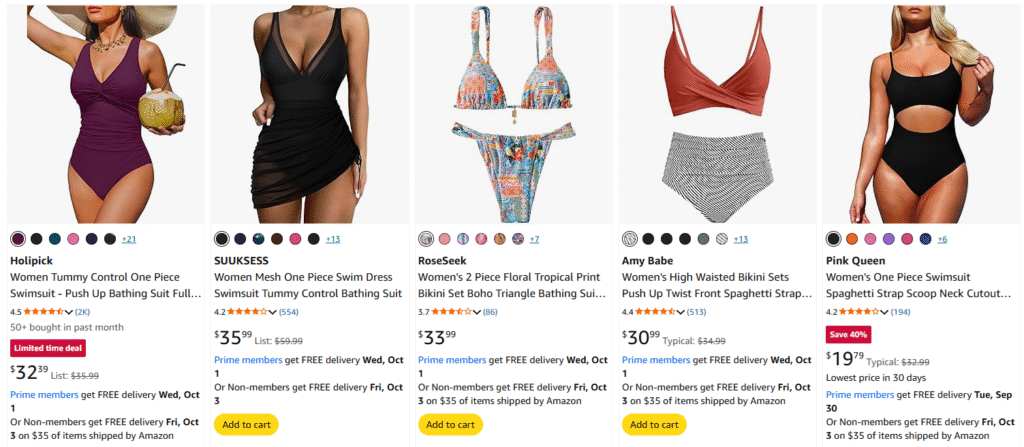
2. Polyester
Why it’s popular: Polyester has gained popularity for its UV resistance and quick-dry properties. Compared to nylon, it holds color longer, making it a strong choice for printed swimwear collections.
Pros:
- Superior colorfastness and chlorine resistance
- Fast drying
- More cost-effective
Cons:缺点:
- Slightly less soft than nylon
- Lower elasticity (requires spandex blending)
Best for: Brands producing active swimwear, competitive swimsuits, and printed designs that require long-lasting vibrancy.
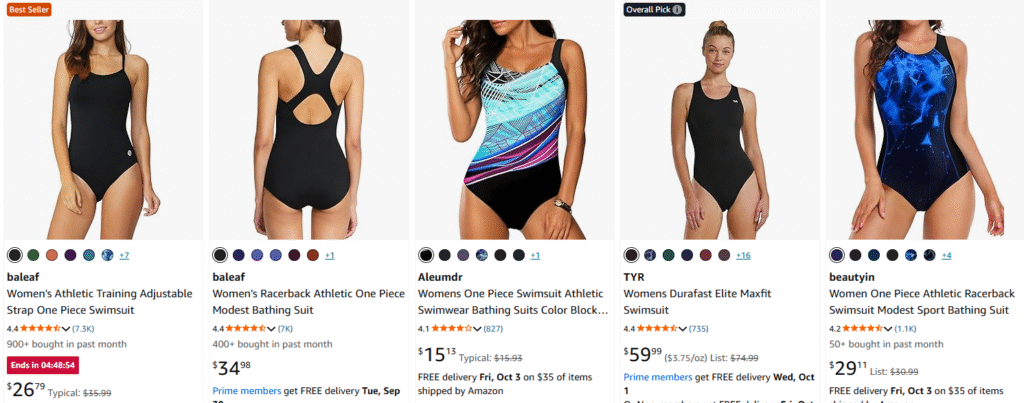
3. Spandex (Elastane / Lycra®)
Why it’s popular: While rarely used alone, spandex is blended with nylon or polyester to provide stretch and shape retention. A small percentage (typically 15–25%) ensures flexibility and comfort.
Pros:
- Outstanding elasticity
- Allows for body-hugging fits
- Enhances movement
Cons:缺点:
- Sensitive to chlorine and sunscreen
- Can lose shape over time if not blended properly
Best for: Any brand that wants form-fitting swimwear, including bikinis, one-pieces, and athletic swimwear.
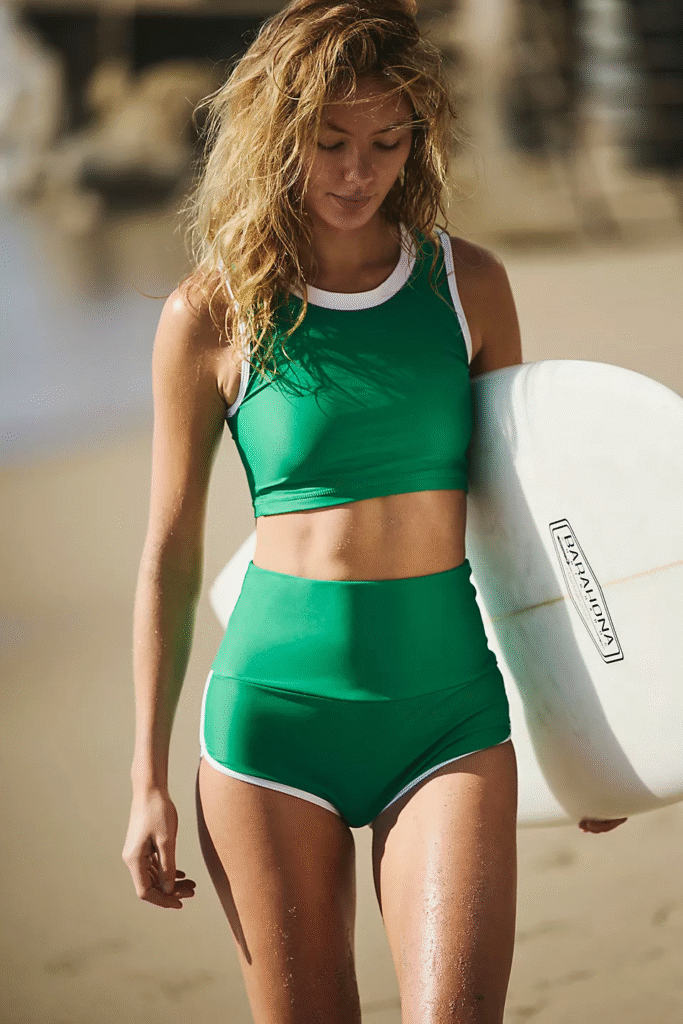
4. Recycled Polyester (rPET)
Why it’s popular: As sustainability becomes a top priority, recycled polyester made from post-consumer plastic bottles or fishing nets is in demand. It offers nearly identical performance to virgin polyester while reducing environmental impact.
Pros:
- Eco-friendly and brand-aligned with sustainability goals
- Durable and UV resistant
- Supports marketing as a “green” brand
Cons:
- Slightly more expensive than virgin polyester
- Availability may vary depending on suppliers
Best for: Brands emphasizing eco-friendly, sustainable swimwear and looking to appeal to environmentally conscious consumers.
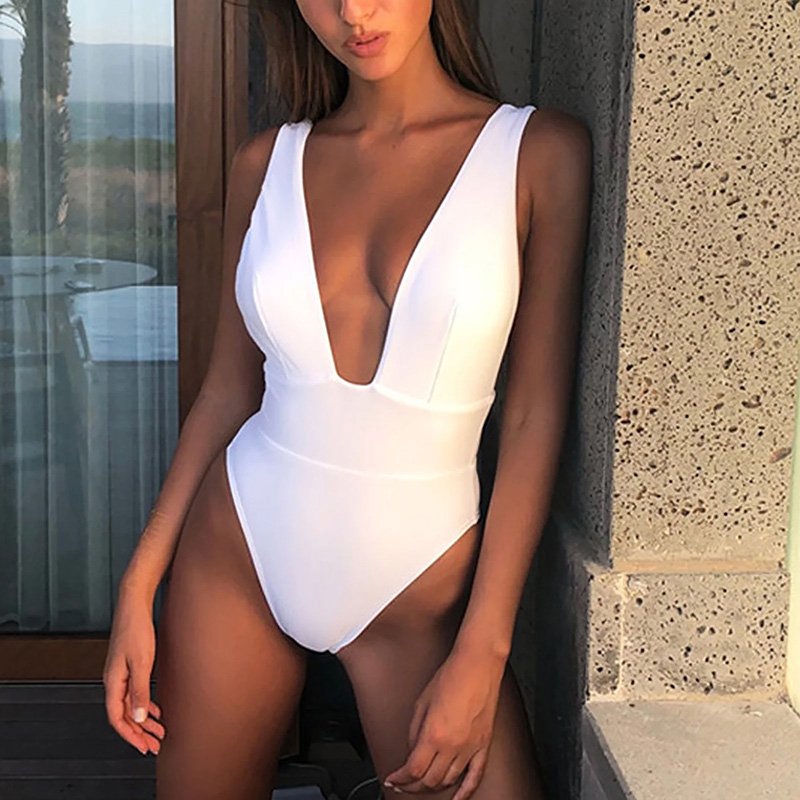
5. Recycled Nylon (ECONYL®)
Why it’s popular: ECONYL® and other recycled nylon fibers are made from discarded fishing nets, carpets, and industrial plastics. They deliver the luxurious softness of nylon with a sustainable story.
Pros:
- High-quality, soft, and luxurious finish
- Reduces ocean waste and carbon footprint
- Performs as well as virgin nylon
Cons:
- Premium cost compared to traditional nylon
- May require careful sourcing
Best for: Premium brands and eco-conscious labels that want to combine performance with storytelling about ocean conservation.
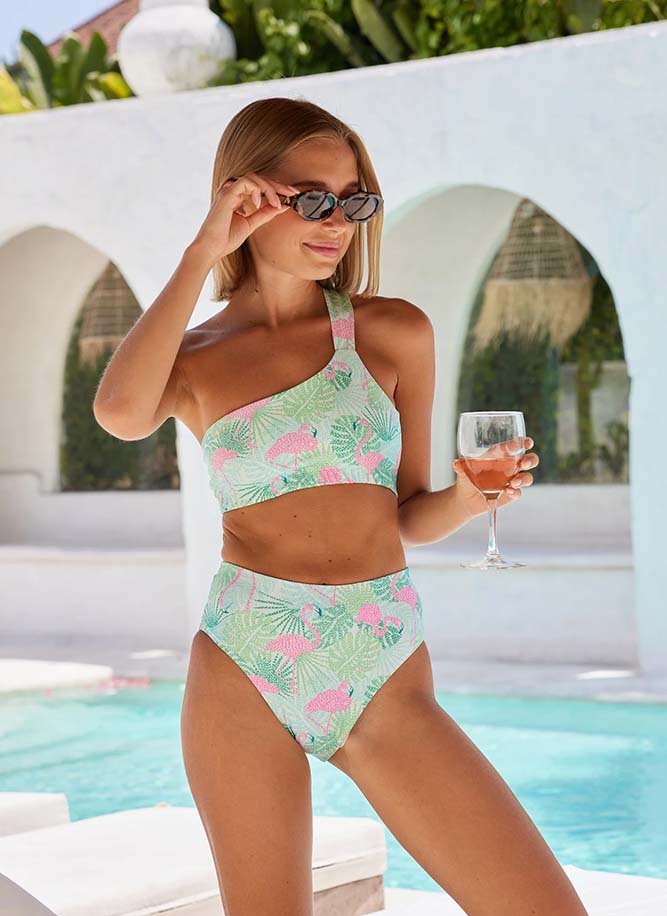
6. PBT (Polybutylene Terephthalate)
Why it’s popular: PBT is a specialized polyester variant often used in competitive swimwear. It’s lightweight, chlorine-resistant, and retains shape even after repeated use in pools.
Pros:
- Excellent chlorine resistance
- Retains elasticity over time
- Resistant to pilling
Cons:
- Limited softness compared to nylon
- More common in performance swimwear, less in fashion
Best for: Brands targeting competitive swimmers, water sports, and high-performance markets.
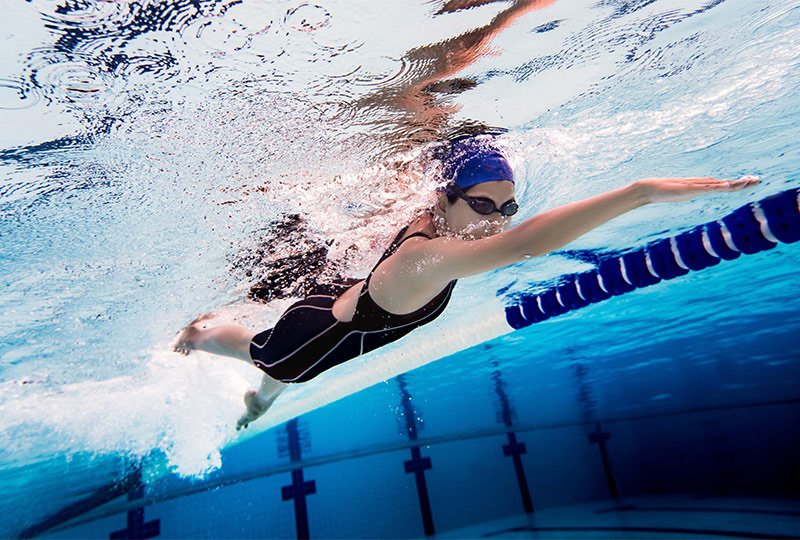
7. Shiny & Metallic Fabrics
Why it’s popular: For fashion swimwear brands, shiny fabrics with metallic or foil finishes add glamour and a statement look. They stand out in resort collections and luxury swim lines.
Pros:
- Eye-catching visual appeal
- Adds a premium or luxury feel
- Works well for fashion shows and editorial shoots
Cons:
- Less durable under chlorine and sunscreen
- May require extra care in washing
Best for: Luxury and boutique swimwear brands seeking standout designs for evening pool parties, resorts, and Instagram-worthy looks.
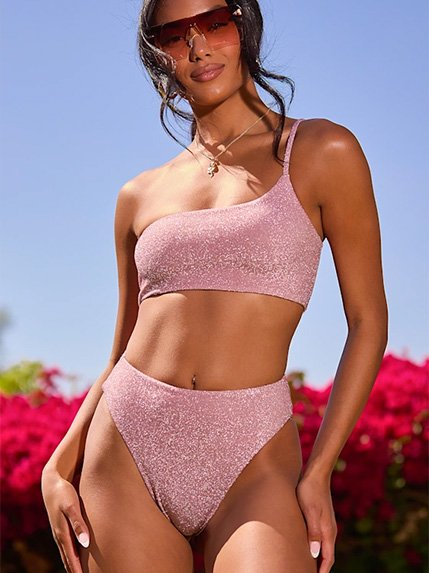
8. Textured & Jacquard Fabrics
Why it’s popular: Texture adds depth and uniqueness to swimwear designs, differentiating brands in a competitive market. Ribbed bikinis and terry swimwear are trending globally.
Pros:
- Fashion-forward and unique textures
- Comfortable and flattering fit
- Adds design versatility
Cons:缺点:
- Slightly heavier than smooth fabrics
- Can take longer to dry
Best for: Boutique swimwear brands looking for unique aesthetics and tactile appeal.
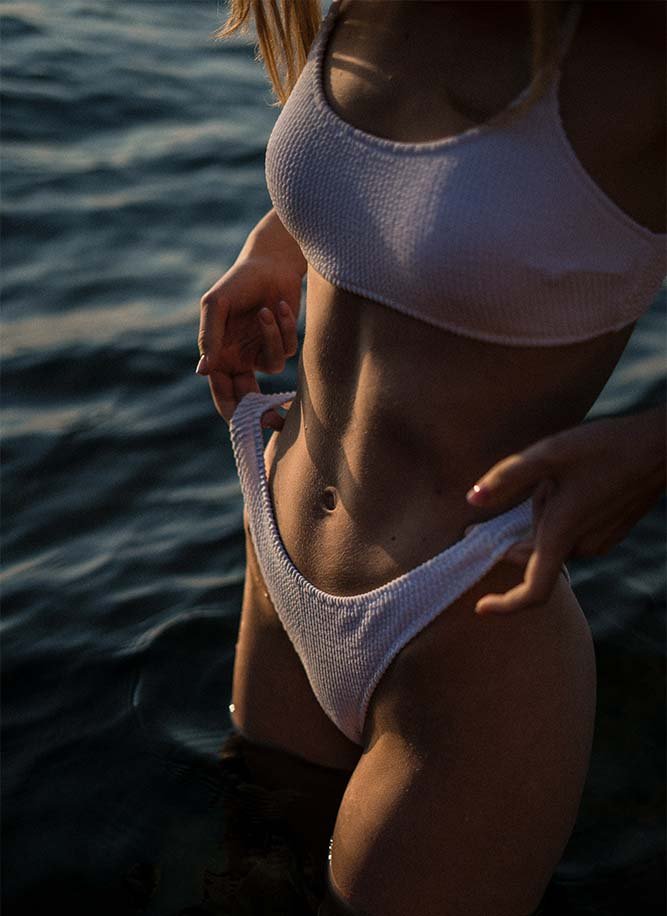
9. Neoprene
Why it’s popular: Neoprene, traditionally used for wetsuits, has found a niche in fashion swimwear for its structured look and sporty vibe.
Pros:
- Provides structure and support
- Insulating for cooler water
- Trendy, modern aesthetic
Cons:缺点:
- Bulky and less flexible than nylon or polyester blends
- Can be hot and less breathable
Best for: Sports-inspired or statement swimwear collections that want bold shapes and structure.
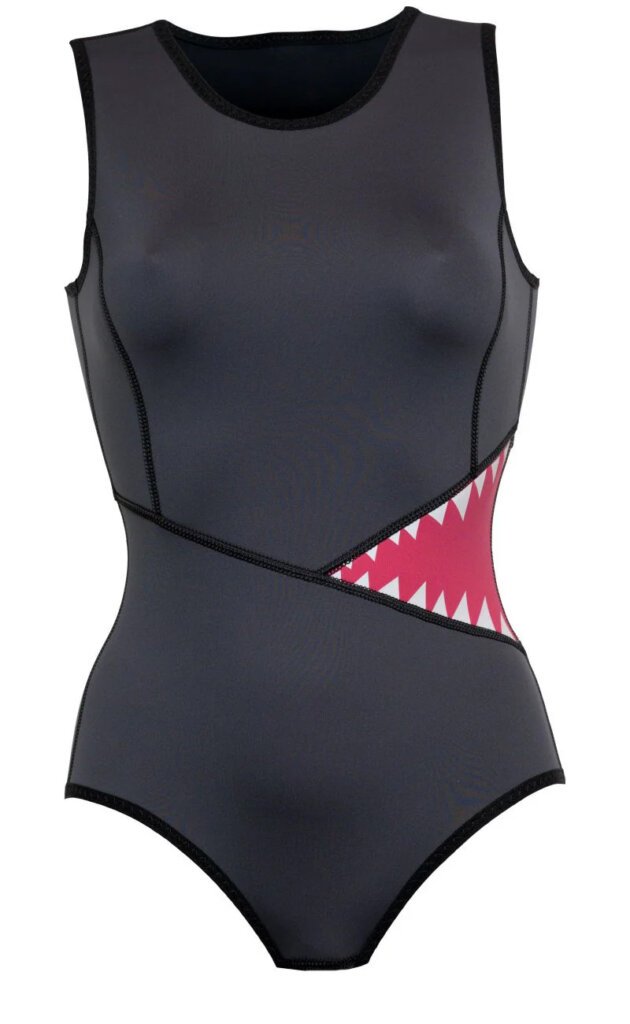
10. Mesh & Power Net
Why it’s popular: Used as overlays, panels, or linings, mesh adds style, breathability, and support. Power net is often used for shaping or tummy control swimsuits.
Pros:
- Adds stylish see-through details
- Provides shaping and support
- Lightweight and breathable
Cons:
- Not suitable as the main fabric
- Requires careful stitching and finishing
Best for: Brands designing plus-size swimwear, control swimwear, or fashion-forward designs with cut-outs and layered looks.

How to Choose the Right Fabric for Your Swimwear Line
Selecting the right swimwear fabric isn’t just a technical decision—it directly affects your brand identity, target market, pricing strategy, and long-term customer satisfaction.
Here are the key factors to consider when making your choice:
1. Define Your Brand Positioning
Ask yourself: What does my brand stand for?
Luxury & premium brands
should lean toward high-quality fabrics like ECONYL®, ribbed textures, or metallic finishes that communicate exclusivity.
Eco-conscious brands
benefit from recycled polyester (rPET) or ECONYL®, which provide strong sustainability messaging.
Mass-market or wholesale brands
often prefer nylon-spandex blends for their affordability and wide availability.
2. Know Your Target Audience
Different demographics have different priorities when buying swimwear:
- Young consumers (Gen Z & Millennials): Drawn to sustainability, trendy textures, and bold prints.
- Athletes & active swimmers: Demand chlorine-resistant fabrics like polyester or PBT for durability.
- Resort & leisure customers: Often prefer soft, body-flattering fabrics such as nylon-spandex blends.
- Plus-size market: Fabrics with power net or high spandex content provide support and shaping.
3. Balance Aesthetics vs. Functionality
Aesthetic-first collections (fashion, resort, luxury) benefit from shiny fabrics, rib knits, and bold prints that stand out visually.
Performance-first collections (sports, training, competitive) require chlorine resistance, UV protection, and high stretch recovery.
Hybrid lines may combine both—fashion-forward designs made with durable, eco-friendly fabrics.
4. Consider Sustainability Goals
Recycled nylon (ECONYL®) helps reduce ocean plastic and appeals to environmentally conscious buyers.
Recycled polyester (rPET) allows brands to market eco-friendly swimwear at competitive prices.
Certifications like OEKO-TEX® and GRS strengthen your credibility in eco-marketing.
5. Factor in Care & Durability
End customers expect swimwear to last multiple seasons.
Consider:
- Chlorine resistance: Essential for swim schools, athletes, and frequent pool users.
- UV resistance: Important for sun exposure in resorts and beaches.
- Sunscreen & saltwater resistance: Prevents fading and fiber breakdown.
- Easy care: Fabrics that are quick-drying and machine-washable increase customer satisfaction.
6.Plan for Printing and Customization
- Polyester-based fabrics hold sublimation prints extremely well—ideal for brands that want bold, long-lasting patterns.
- Nylon blends give softer finishes but may not keep prints as vibrant long-term.
- Shiny & textured fabrics can limit print clarity but add tactile and visual appeal.
If your brand identity relies on custom prints, polyester blends should be your go-to choice.
Conclusion
Choosing the best swimwear fabric isn’t just a production decision—it’s a brand statement. The right material enhances performance, communicates your values, and helps your swimsuits stand out in a crowded market.
At Joybikini, we specialize in helping global swimwear brands select and source the perfect fabrics. With options ranging from eco-friendly recycled textiles to premium shiny finishes, we ensure your swimwear line delivers both quality and uniqueness.
Whether you’re a startup launching your first collection or an established brand scaling globally, our low MOQ, fast sampling, and transparent production process make it easier to bring your designs to life.
